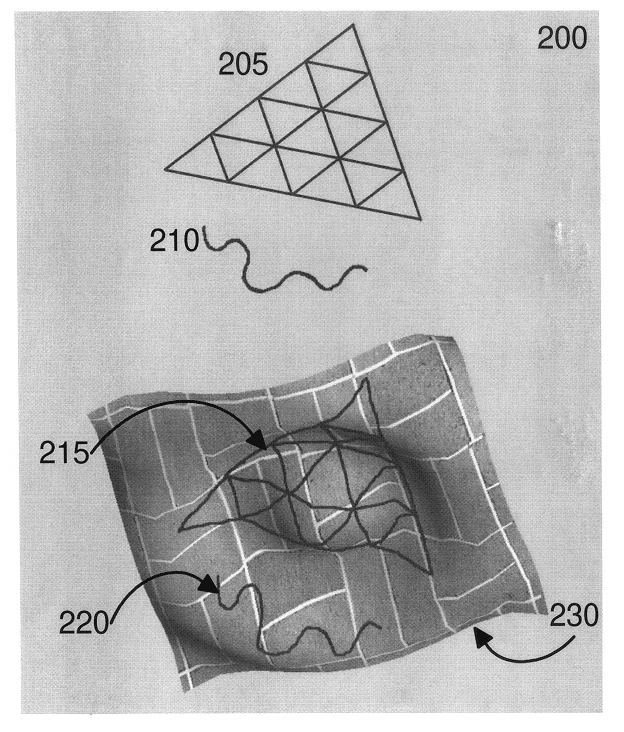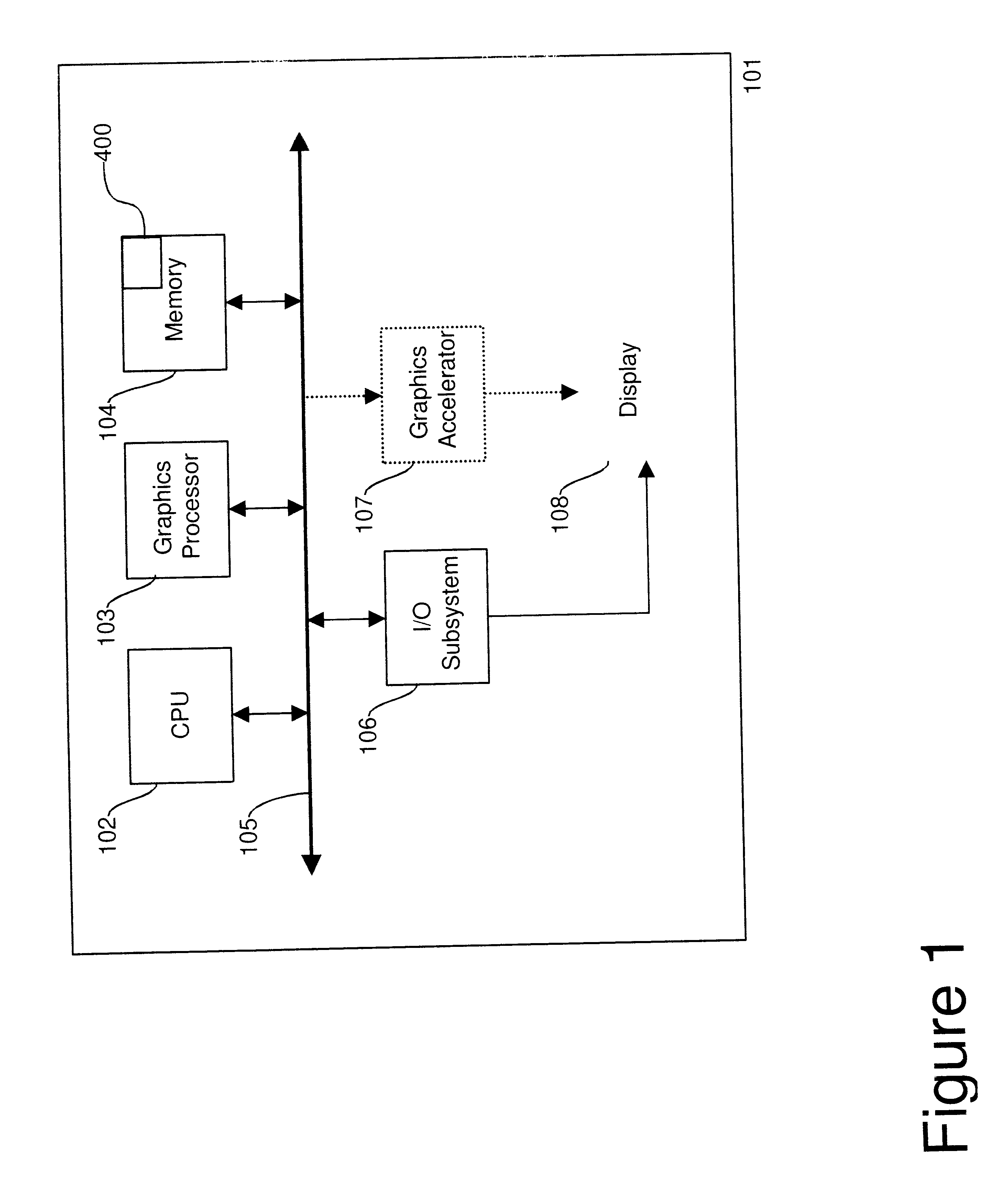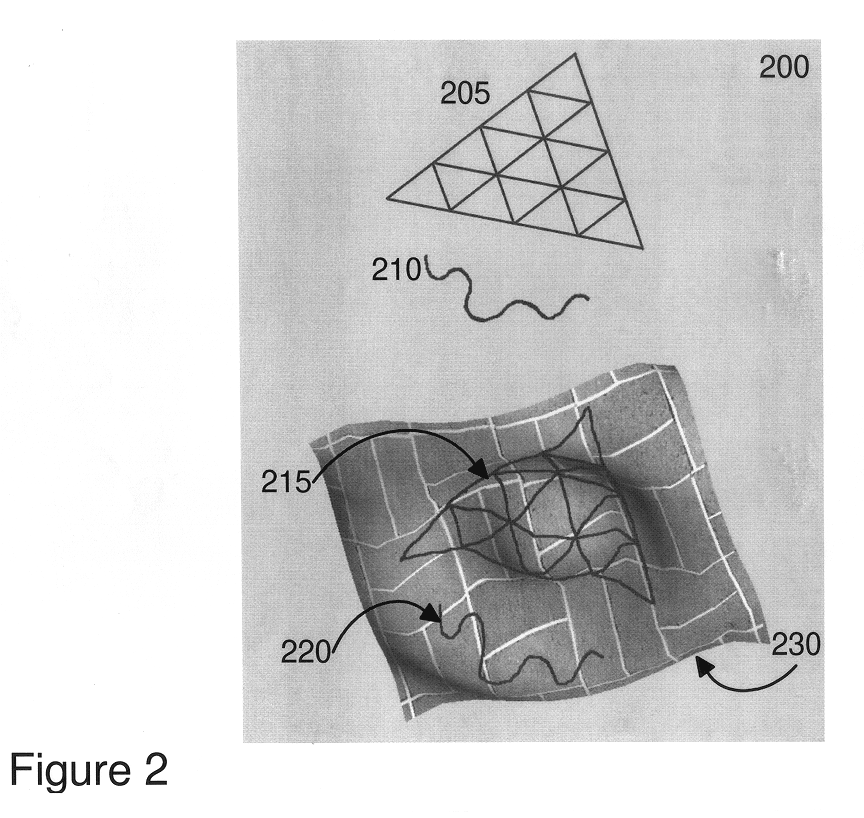Apparatus, system, and method for simplifying annotations on a geometric surface
- Summary
- Abstract
- Description
- Claims
- Application Information
AI Technical Summary
Benefits of technology
Problems solved by technology
Method used
Image
Examples
Embodiment Construction
.
Referring now to the drawings, and more particularly, FIG. 1 is a block diagram of a preferred embodiment geometric modeling system 101 that includes a memory 104 where one or a plurality of geometric models are stored. One or more Central Processing Units (CPU) 102 access the model via the internal bus 105 and assist a graphics processor 103 in rendering the image and conveying it via the I / O subsystem 106 and the graphics accelerator 107 to the display 108. Optionally, the internal bus 105 may be connected to a network interface to transmit the geometric models across a network to remote modeling systems. These components are all well-known. A novel annotation simplification process 400, described in more detail in FIG. 4, is executed by one or more of the CPUs.
FIG. 2 shows an example 200 of annotations on the surface of a model 230. The geometry of the model defines the actual shape of the surface. In this example, the geometry represents an undulating surface. The attributes fo...
PUM
 Login to View More
Login to View More Abstract
Description
Claims
Application Information
 Login to View More
Login to View More - R&D
- Intellectual Property
- Life Sciences
- Materials
- Tech Scout
- Unparalleled Data Quality
- Higher Quality Content
- 60% Fewer Hallucinations
Browse by: Latest US Patents, China's latest patents, Technical Efficacy Thesaurus, Application Domain, Technology Topic, Popular Technical Reports.
© 2025 PatSnap. All rights reserved.Legal|Privacy policy|Modern Slavery Act Transparency Statement|Sitemap|About US| Contact US: help@patsnap.com



